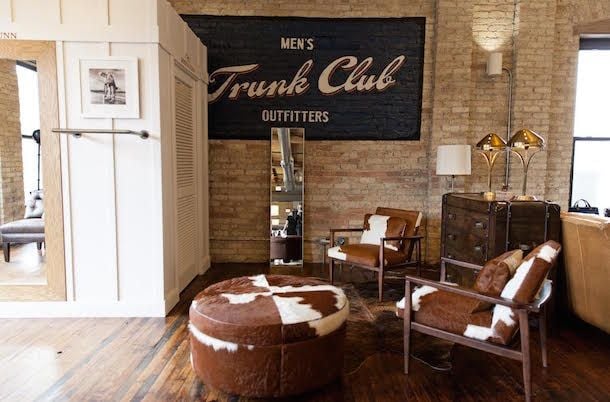
Whoever said Chicago tech was an unsexy cluster of conventional B2B players has clearly never met Trunk Club.
Headquartered in River North, the on-demand fashion tech company has become somewhat of an institution in a city so often criticized for its lack of flashy, consumer-facing products. Since its launch in 2009, the company has grown into one of Chicago’s core tech triumphs: with a $350 million sale to Nordstrom in 2014 and a growing headcount that’s landed the company on more than one of our annual Top 100 Digital Tech Employers list, Trunk Club’s tech-driven approach has lead it to the vanguard of technology, fashion, and the future of commerce.
“The world is splitting into two halves: a cheap-fast-now, commoditized world that Amazon is going to win at, and the other side is the service- and experience-focused commerce world,” said Mike Cruz, Trunk Club’s VP of Engineering. “We don’t sell you what you need. We ask you where you want to be and give you clothes to achieve that goal.”
The company’s signature “trunks” are sent directly to your door and are made up of about a dozen trendy clothing options — all of which are hand-selected by a personal stylist following a virtual consultation.
And despite being the best-dressed techies in the room, the company’s allure also lies in a fashionable tech journey that's the envy of many in town.
From monolith to microservices, and back again.
Over the years, Trunk Club’s platform and team have gone through a number of iterations. By the time Cruz had hopped on board in 2011 (when the team was just over 20), Trunk Club’s tech was a conglomeration of off-the-shelf-tools with some hand-written, connective tissue thrown in for good measure. Built entirely on Ruby on Rails, the platform was optimized for quick scaling, he said, but soon proved a bit too brittle to support Trunk Club’s fast-growing tech division.
 “Because Rails is such a rapid framework, you can build a business on it quickly,” Cruz said (picture left), “but it’s hard to make it to scale within a tech team that continues to grow.”
“Because Rails is such a rapid framework, you can build a business on it quickly,” Cruz said (picture left), “but it’s hard to make it to scale within a tech team that continues to grow.”
Under Cruz’s direction, the company pivoted away from what he called a monolith structure to a network of microservices better suited to support both the platform and the team. During that stage of growth, the team spent time tiering out the architecture — adding structures like experienced APIs and business logic services — that allowed the team to evolve even faster.
But soon, things grew a little too intricate. Citing Conway’s Law, Cruz said the complexity of a system reflects the complexity of an organization — an area, he said, the Trunk Club team had then set its sights on simplifying. That’s why, in their third major iteration that focused on the front end, Cruz and company are returning to simplicity.
“We’re making and resizing services because simplicity is a lot easier,” he said. “The goal is to be able to keep the architecture in your head. We’re not there yet, but we’re getting close.”
Today, the team runs with Ruby on the backend and a JavaScript U/X framework on the front end. But what hasn’t changed, Cruz said, is the sell.
“[In the beginning] what was truly unique about our business was not the speed in which we delivered the product or the product itself, but the relationship that fronted it — that made it meaningful,” he said, adding that Trunk Club’s mission to make its customers feel confident every day remains the primary driver of business.
The Trunk Club "club"
Just as the company's tech has evolved, so too has its overall offerings and team composition.
At its inception, Trunk Club was designed with men in mind, though the service has since expanded to women’s fashion, thanks in large part to high demand.
In concert to their online presence, Trunk Club also operates five physical clubhouses throughout the country in Chicago, Los Angeles, New York, Dallas, and Washington D.C.
Cruz said the engineering team alone today sits at about 30, with an additional 70 team members like designers, dev ops, and IP rounding out the team. And that’s in addition to a sleek army of personal stylists who curate each trunk and a number of other positions, like marketing and sales.
But regardless of their role, Cruz said the Trunk Club, er, club exemplifies certain core values lived out each day at work.
“We’re a very entrepreneurial, bottoms-up, humble group of people that are very smart, though no one would tell you that,” he said. “The team we need today is a team that can think big — a team that can think more about innovation and think less about copying a market leader. We are leading the market. We are furthest ahead in this model.”
As such, he said they’re neither looking to grow much larger nor hire any ole’ engineer that can hack away at bugs that will inevitably arise.
“We need people to drive into that ambiguity — that fog of what might be — and actually make things happen,” he said.
Images via Trunk Club.
Does your company have a story to tell? Shoot us an email, or follow us on Twitter @BuiltInChicago.



